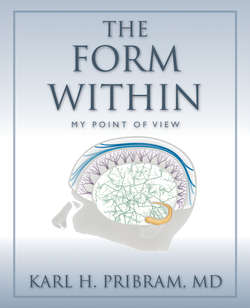Читать книгу The Form Within - Karl H Pribram - Страница 30
На сайте Литреса книга снята с продажи.
Brain Waves, Interference Patterns and Holography
ОглавлениеFortunately for my self-respect, (and only because “P” comes before “S” on the mailing list) I received my next issue of Scientific American before Nico Spinelli received his. In that issue, two optical engineers at the University of Indiana, Emmet Leith and J. Upaticks, described how the recording of interference patterns on photographic film had tremendously enhanced the storage capacity and retrieval of images. Images could now readily be recovered from the “store” by a procedure (described below) that had actually been developed by the Hungarian mathematician Dennis Gabor almost two decades earlier. Gabor had hoped to increase the resolution of electron microscopy. He had called his procedure “holography.”
Gabor’s mathematical holographic procedure, which Leith had later used to produce a holographic process, was a miraculous answer to the very question Jack Hilgard had posed to me about perception just a few weeks earlier. Everything in a pattern that we perceive—shading, detail and texture—could be accomplished with ease through the holographic process.
Russell and Karen DeValois’s 1988 book Spatial Vision as well as my own 1991 book Brain and Perception would provide detailed accounts of each of our own experimental results and those of others who, over the intervening decades, used Gabor’s mathematics to describe the receptive fields of the visual system.
Unfortunately, at the time Hilgard’s textbook revision was due, these insights were as yet too untested to provide him with the material he needed. But making visible the processing of holographic images showed me the critical role mathematics would play in our ability to grasp and interpret the complexity of the brain/ mind relationship.
8. Interference patterns formed by wave fronts of synapses
